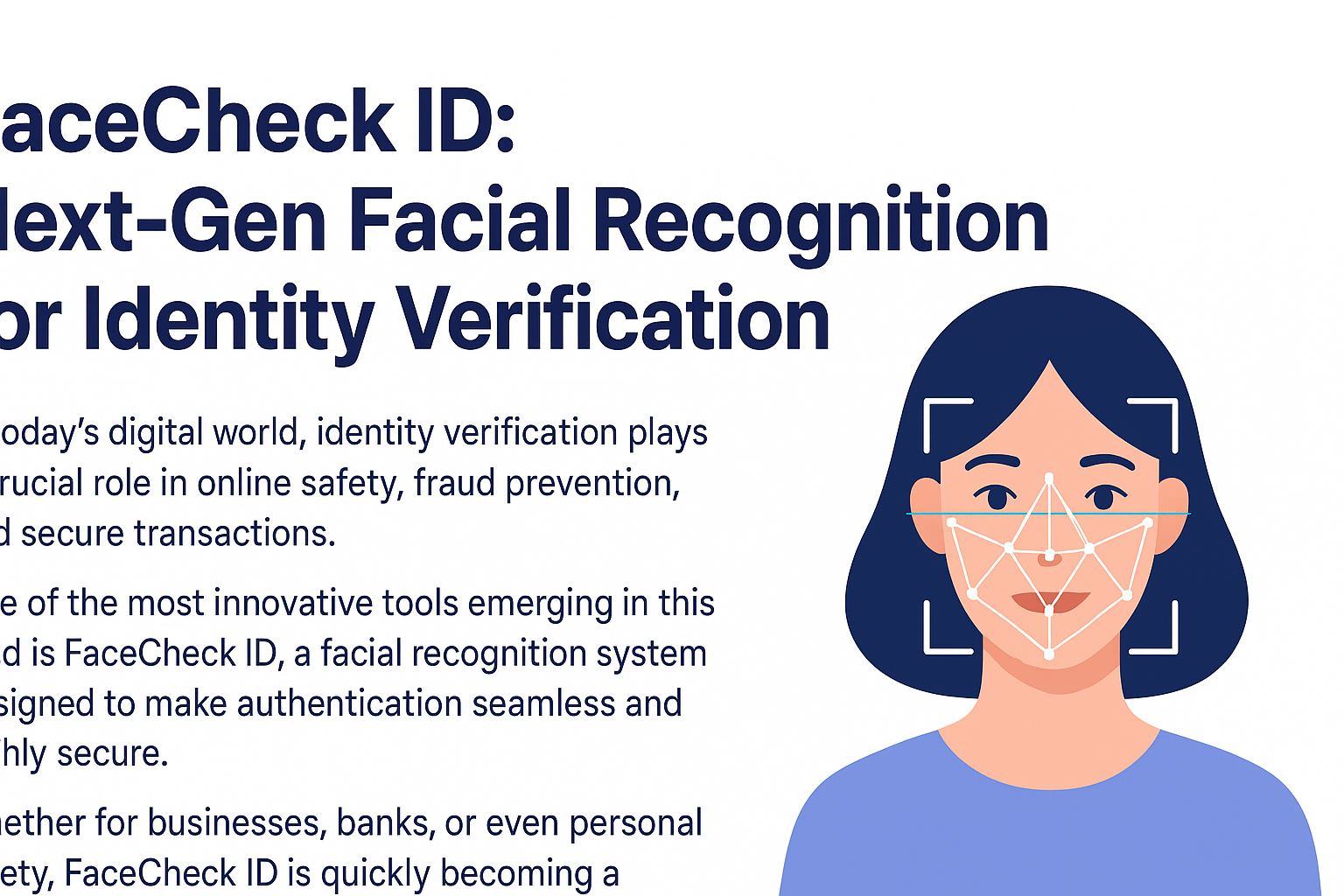Identity verification remains vital for security and transaction safety from fraud in the digital arena. One of the novel products in this sector is FaceCheck ID, a seamless and secure hyper-authentication system. The system is gaining in popularity for use by individuals, banks and other businesses and enhancing safety.
What is FaceCheck ID?
The system compares authenticating images with varying real-time images combining AI systems. Ordinarily, systems of OTPs or contrived passcodes FaceCheck ID will provide a more reliable and optimal result. Its low risk of use in identity data theft systems makes it relevant for sensitive and secure industries.
Why is FaceCheck ID Important?
- FaceCheck ID provides tools and solutions to emerging issues in cybercrime with its components:
- Avoidances of additional steps such as pin or password entry for seamless login.
- Trustworthy verification technology with accuracy in detecting users and alias identities.
- Deepfake and stolen credential defenses, augmented security systems.
- Broad applicability for use by e-commerce, and government services alongside banks and decentralized finance applications.
Advantages of using FaceCheck ID
- Time-efficient onboarding. Businesses using FaceCheck ID for KYC verification eliminate the need to do manual verification during the onboarding process.
- Preventing fraud. Slows down identity theft due to biometric authentication that is difficult to impersonate.
- Enhanced user experience. Unlike the old days when forgotten passwords and OTP delays were the order of the day, all that is needed now is a face scan.
- Value-for-Money Security. Reduces the operational expenses incurred through manual verifications, as well as losses due to fraud.
Applications of FaceCheck ID
Banking and Finance. Authentication of clients prior to loan approvals, and during remote transactions.
E-commerce. Blocking the registration of unauthorized accounts, as well as the payment of scam transactions.
Travel and Hospitality. Fast face vetted boarding and hotel check-ins via facial recognition.
Digital Government Services. Protecting the digital ID and the public service portals.
The growth of FaceCheck ID
With the advancement of technology, the use of FaceCheck ID is presumed to be a benchmark in the digital identity verification in the industry. Daily improvements of AI-based face recognition gives a strong indication of the enhanced fraud protection and user experience we are on the verge of.
FAQs about FaceCheck ID
1. What is FaceCheck ID?
FaceCheck ID is a facial recognition technology used for identity verification. It scans and matches a person’s face with stored data to confirm their identity quickly and securely.
2. How does FaceCheck ID work?
FaceCheck ID uses AI-driven face matching and biometric authentication. When a user scans their face, the system compares it with the registered image to verify if it’s the same person.
3. Is FaceCheck ID safe for online transactions?
Yes, FaceCheck ID provides strong online fraud prevention. It ensures that only genuine users can access accounts, reducing the risk of stolen passwords or fake identities.
4. Can FaceCheck ID be used for KYC verification?
Absolutely. Many businesses use FaceCheck ID for KYC verification, making customer onboarding faster, secure, and hassle-free.
5. What industries use FaceCheck ID?
Industries like banking, e-commerce, travel, and government services rely on digital identity verification through FaceCheck ID for fraud prevention and secure transactions.
6. Does FaceCheck ID protect against deepfakes?
Yes, advanced FaceCheck ID systems can detect spoofing attempts such as deepfakes, photos, or videos, ensuring only real users get verified.
7. Why should businesses adopt FaceCheck ID?
Businesses should use FaceCheck ID to improve customer trust, enhance security, and reduce fraud risks, all while offering a smoother user experience.
Final Remarks
In case you operate a business that involves transactions over the web, the adoption of FaceCheck ID will greatly minimize fraudulent activities while enhancing the trust of your customers. It is not only about security, but about convenience, expediency, and dependability in a world that is largely digital.



